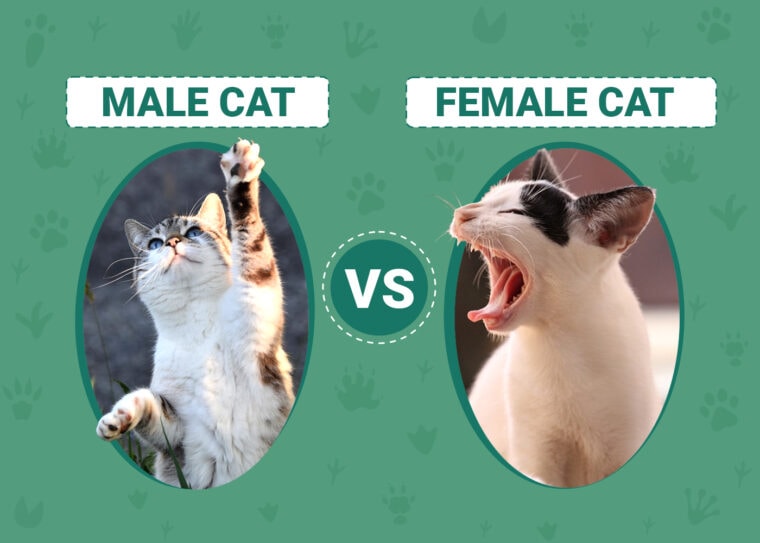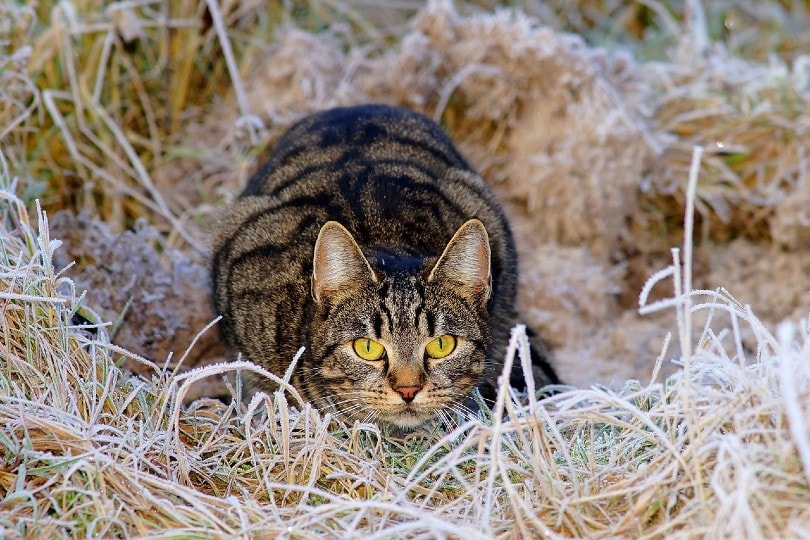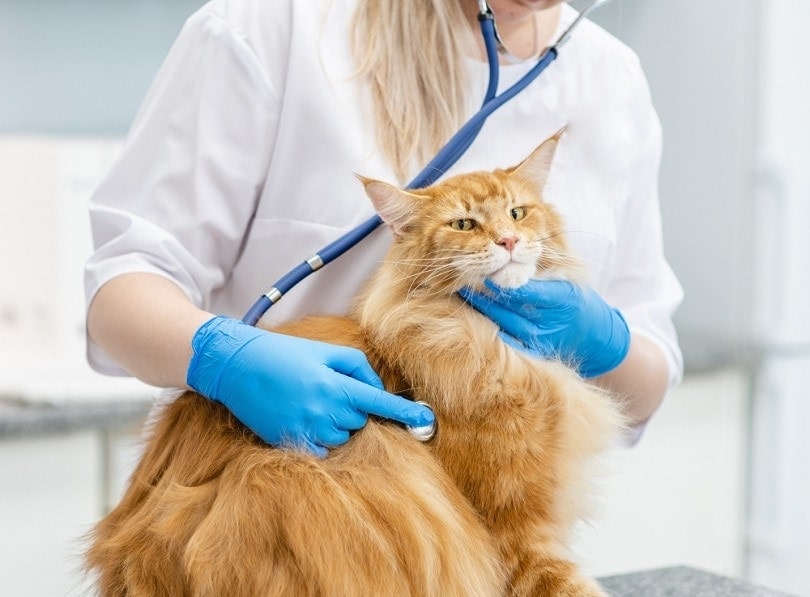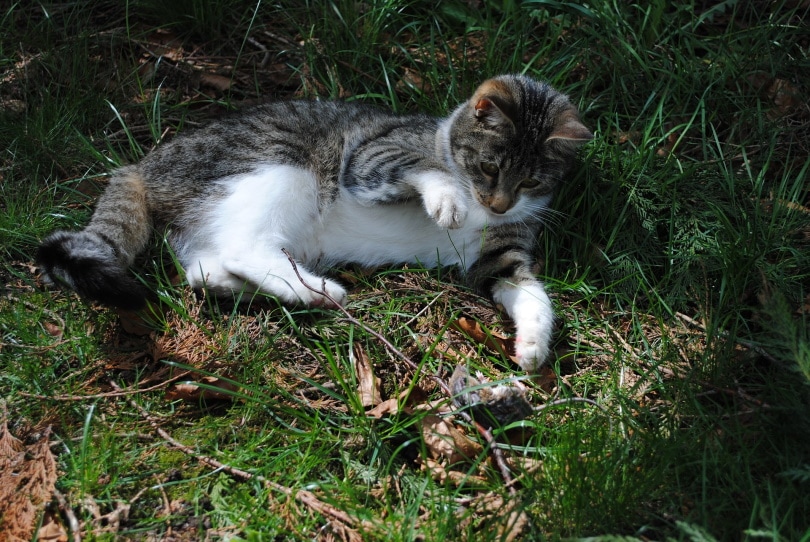
If you are thinking about purchasing a cat for your home, one of the first questions many people ask us is the difference between the male and female and how to know which one is better for your household. If this sounds like your situation, keep reading while we take an in-depth look at the differences in personality, health, breeding, and more to help you make an informed decision.
Visual Differences

At a Glance

Cats 101
Cats are one of the most popular pets in the United States and the rest of the world. They come in a wide variety of colors and patterns, and you can get them with long hair, short hair, and even no hair, so you are sure to find something you like. Cats are intelligent, curious, affectionate, and territorial. Cats have lived close to humans for thousands of years and have made themselves useful for removing rodents and protecting grain for farmers and sailors. They are quite adaptable and don’t require much space, so they are perfect for a small city apartment.
Male Cat Overview

Personality / Character
Aggression
Male cats typically have a lot of testosterone that can cause them to become aggressive toward other animals, especially other cats it finds in their territory. Neutering can help reduce testosterone in the system, causing the cat to be noticeably calmer and less aggressive toward other animals.
Territorial Behavior
If the cat is not neutered and spends a lot of time outdoor, it will likely exhibit territorial behavior. These cats often mark their territory with urine. Male cats may also mark their territory indoors, especially if there is a female in heat nearby.
Wandering
Male cats spend a lot more time wandering and can get quite far away from home. Male cats tend to look for females in heat, and if they find one, they could spend a considerable amount of time at that location and can be gone for 3 or 4 days at a time. Unfortunately, this is also when the cat is in the most danger because there will be other male cats in the same area hoping to be successful mating with the female, which often results in fighting.
Training
Cats are not easy to train to do specific tricks, but they are quite intelligent and will quickly learn their name and other important words like “food” and “outside.” Male cats are more food-oriented, and you can get them to do things if you can figure out how you can work in a treat. They are quite good at solving puzzles to unlock treats.
Health & Care

Feline Tail Gland Hyperplasia
Feline tail gland hyperplasia can also be called stud tail, and we usually see it in intact males, but it can also occur in neutered cats. This issue causes a skin disease at the base of the tail that can cause greasy or missing hair along with a waxy substance that sometimes accompanies a foul smell. Antibiotics can help clear up any infection, and cleaning the area with special shampoo can help eliminate the problem.
Urethral Obstruction
Urethral obstruction is another problem that often affects male cats. Mucous and small stones released from the kidneys can plug the urethra, preventing the cat from emptying its bladder. Experts aren’t sure what causes this painful condition, but suspect diet and infections may play a part. Sedation is usually required so doctors can insert a catheter to flush out the urethra.
Breeding
When male cats are ready to start breeding, they tend to stop playing with their owner and begin to howl to let females know they are prepared to mate, and they can smell a receptive female from a considerable distance. Male cats can fight over the female, and the female can have kittens from more than one father at a time.

Female Cat Overview

Personality / Character
Alpha Behavior
Female cats often exhibit alpha behavior, and families with females will notice the same one always eats first, gets first dibs at the best seat, and stands in the most likely places to get noticed by family members. The alpha is usually the largest cat or the best fighter.
Adoptive Mother
Female cats are more likely to engage in affectionate motherly behavior than male cats, especially around children or sick family members. Female cats can even become protective, keeping other pets away from the children.
Community
Female cats tend to be much more willing to accept other cats, either male or female, into the home. They can often form strong bonds with the other animals and greet them with a gentle nose-bump upon seeing them.
Training
Female cats are just as intelligent as males, and they can learn all the same tricks. Unfortunately, they are not as motivated by treats, so it can be a little harder to get them to follow your commands. Female cats often get bored with treat hiding puzzles and allow treats to go unfound much more often than the males.
Health & Care

Uterine Cysts
Uterine cysts often occur in female cats that go into heat several times without getting pregnant. Each time the walls get thicker, increasing the likelihood a cyst can occur. Signs include a closed cervix, vomiting, and frequent urination. Your cat might need a hysterectomy to correct the problem.
Chronic Endometritis
Chronic endometritis is a condition where the uterus promotes the growth of harmful bacteria, resulting in the birth of dead kittens. In some cases, it only happens once, while severe cases can prevent the cat from having kittens permanently.
Breeding
The female cat can go into heat several times a year and will begin to mark the territory with urine to call the males when ready. If the cat is locked indoors, it will likely urinate on the walls near the corners. Females can be quite persistent about going outside, and you will start to see and hear male cats in the area. The female sill goes into heat soon after giving birth and can have several litters each year.
Related read:
- Are Calico Cats Always Female? What You Need To Know!
- Are Male Cats More Affectionate Than Female Cats?
Which Sex Is Right for You?
Both the male and female cats make great pets, and you are unlikely to notice much difference between them, especially if you get them spayed or neutered as we recommend. If you live alone or with one other person and don’t plan on getting any other pets, the males are likely the best choice because they are a little more relaxed. If you have other pets or a large family with children, the female is likely the better choice because she will be more nurturing.
We hope you have enjoyed reading over this short guide and found it helpful in answering your questions. If we have helped you choose what kind of cat you will get, please share our look into the difference between the male and female cat on Facebook and Twitter.
Next on your reading list:
- Are All Orange Cats Male? What You Need to Know!
- Are Cats in Pain When in Heat? What You Need To Know!
Featured Image: Top – NanaCola, Pixabay | Bottom – JACLOU-DL, Pixabay




